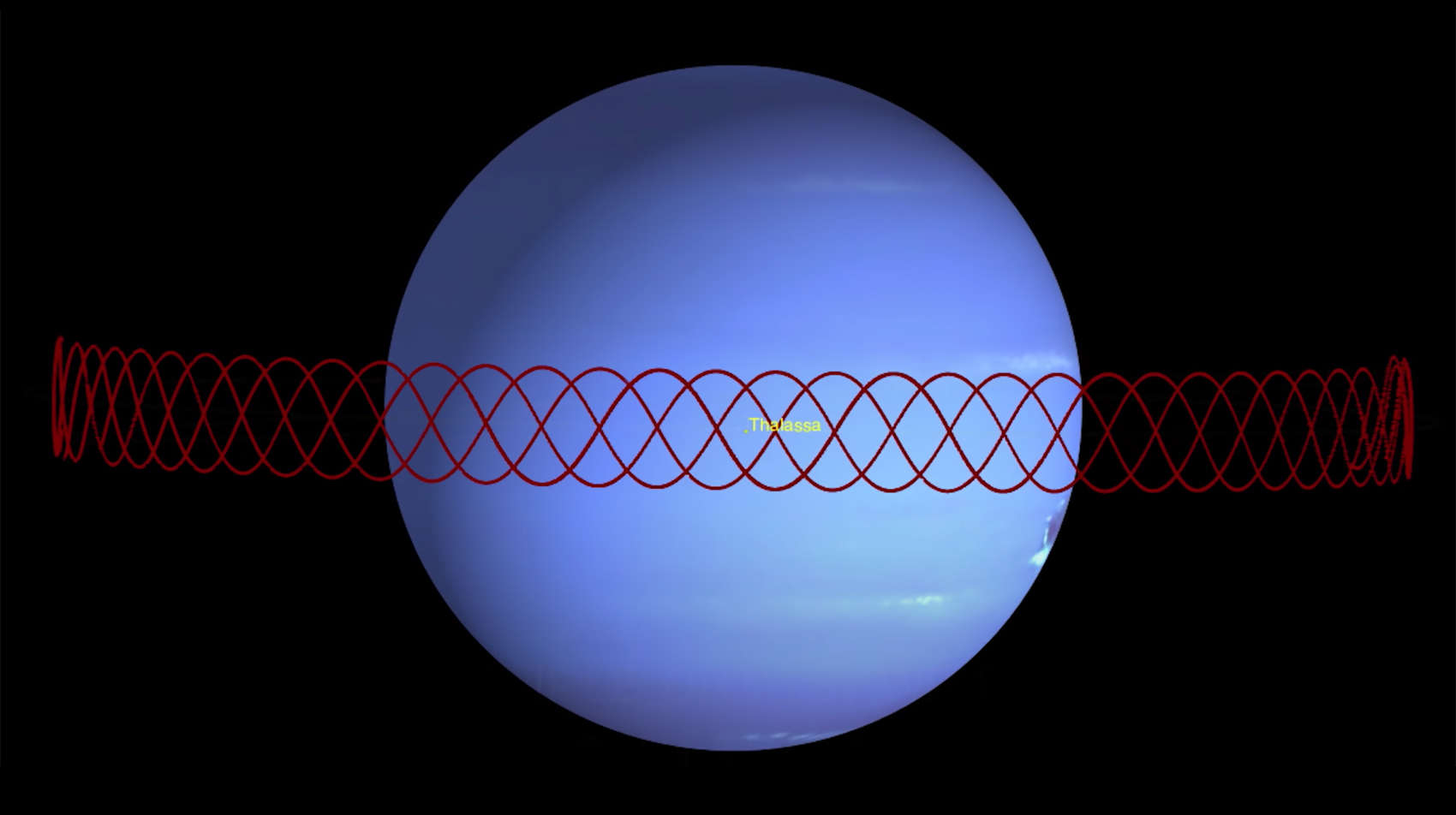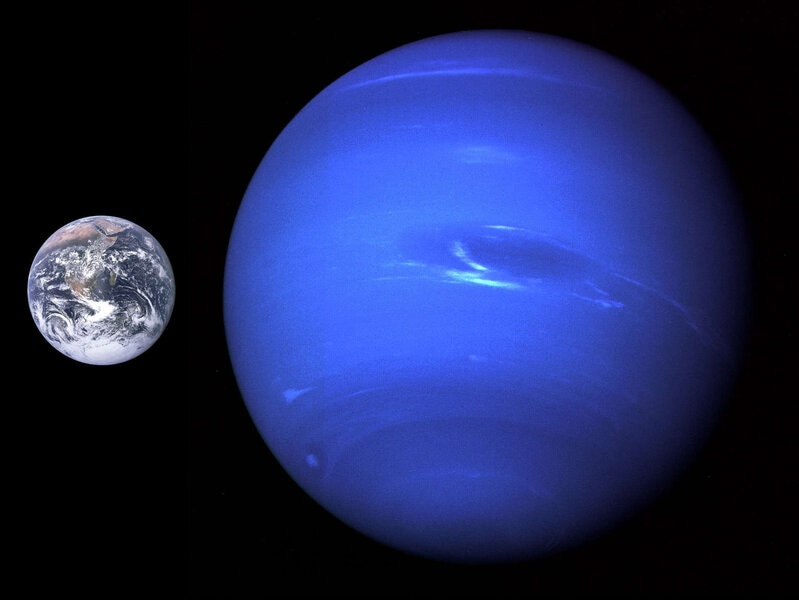Create a free profile to get unlimited access to exclusive videos, sweepstakes, and more!
The dance of Neptune's water sprite moons

Neptune is an interesting planet. And that’s a little irritating, because it’s so far away that it’s really hard to observe it in detail. It’s 30 times farther from the Sun than Earth, which means it gets only 1/900th as much light as we do (and then it reflects that light and sends it back to us, dimming it further). Studying its moons is even harder because they’re so much smaller and subsequently fainter.
But, despite that, some astronomers wanted to investigate the moons to see what they could figure out about their orbits. That can sometimes tell you a lot about the history of the moons (like it did for Neptune’s moon Hippocamp).
In this case, a team looked at dinky Naiad and Thalassa, both elongated potatoes about 100 km in length (and named after Greek water deities, after Neptune’s role as god of the sea). They’re the innermost Neptunian moons known, with very nearly circular orbits 48,200 and 50,075 km from Neptune’s center (which is the usual way to measure orbital size; Neptune has a radius just under 25,000 km). If both these moons orbited in the same plane they’d pass less than 2000 km from each other. Over time, their gravitational interaction with each other, feeble as it may be, would likely force them into different orbits. So how can they be in the orbits they are?
The scientists looked very carefully at the orbits, using data from Hubble, Voyager 2, and ground-based ‘scopes here on Earth dating from 1981 – 2016. That’s a very long baseline, enough to get a really good grip on the orbital characteristics.
What they found is pretty cool. Thalassa’s orbit is almost directly over Neptune’s equator, tilted by only 0.1°. But Naiad’s orbit is tipped by about 4.7°. This has been known for a while, but using the updated numbers they calculated, they found that the two objects are in what’s called a resonance, meaning the orbits fall into a regular pattern with each other.
Every time Naiad passes Thalassa on the inside track, it’s at the point in it orbit where it’s either tipped up or tipped down the most. So instead of passing really close to Thalassa it’s either “above” it (toward Neptune’s north) or “below”, maximizing the distance between them and minimizing the gravitational interaction. The orbits align just right that Naiad passes above it twice in a row, then below it twice in a row, and on and on.
This video should help. The animation shows you the view as if you’re orbiting Neptune along with Thalassa, and shows Naiad’s motion relative to it.
See how when Naiad passes Thalassa it’s above or below it? So they always miss each other! Lots of moons in the solar system follow resonances of one kind or another. Over time as they orbit they poke and prod one another gravitationally, and when they fall into a resonance like this the forces are minimized, so they stay in them. It’s a lot more complicated than this, of course, but that’s how I like to think about it.
The animation is interesting to me. Both moons circle Neptune about once every 7 hours or so, and their periods (length of time to orbit) are extremely close. Naiad takes 7.066 hours, and Thalassa 7.476 hours. Since we’re moving along with Thalassa, we see Naiad move relatively slowly around Neptune.
It’s like two race cars on a circular track moving at very nearly but not quite the same speed. From the bleachers you’s see them both screaming around, one at say 200 kph and the other at 199. From the slower car, though, you’d see the other car pass you at only 1 kph, which is pretty slow.
Now imagine the inside track is on a slant, with one side higher than the other. From the outside (slower) car, you’d see the inside car slowly passing you and bobbing up and down, once per orbit. That would look pretty weird, but that’s what Naiad and Thalassa are doing.
Even though both of you might take, say, 30 seconds to circle the track once, the outer car sees the inner car moving only slightly faster than it is, so it looks like the inner car takes over an hour to circle the track relative to it! Speed is relative, and it can be a little confusing to our puny brains, especially when the motion is circular.
So anyway, this dance keeps Thalassa and Naiad separated, and allows them to pass each other without colliding or yanking so hard that orbits change. It’s a lovely demonstration of the clockwork nature of, um, nature.
I wonder what else we’ll find out about Neptune and its weird moons as we study it more? And oh, how I’d love to see an orbiter visit both it and Uranus, looking at them in detail and for a long time, something that’s so very difficult to do as close to the Sun as we are. The outer solar system holds a lot of secrets, and it’s well past time we started uncovering them.



























